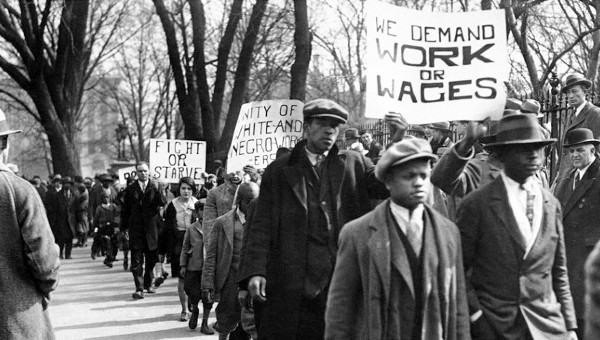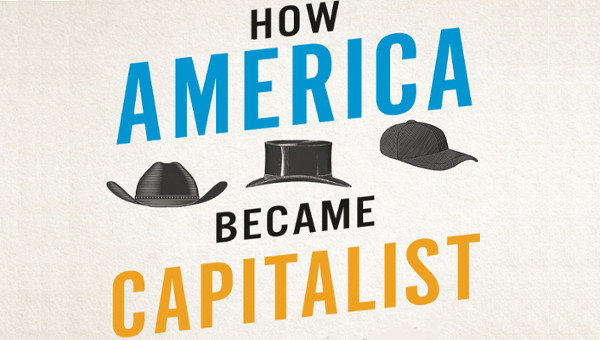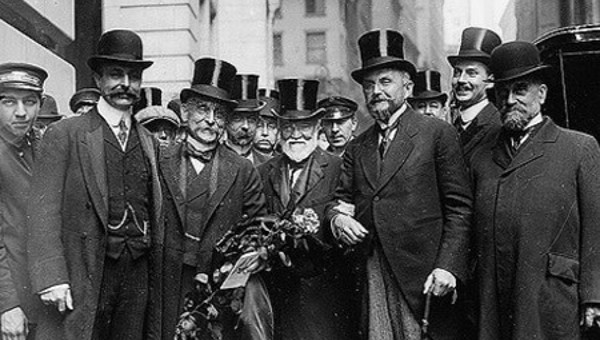The resignation of General Electric (GE) CEO Jeff Immelt last month is the latest sign of the broad restructuring of political and economic power currently underway in the United States. His departure, and John Flannery’s arrival, reveals a lot about the new phase of financialization that has emerged from the Great Financial Crisis.
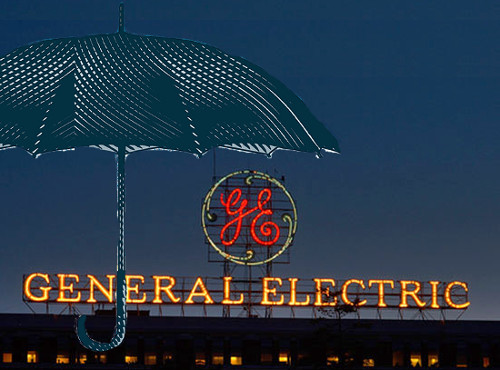 As financial markets and institutions became a more important part of the economy in recent decades, so too did they take on a larger role within corporations themselves, even ostensibly nonfinancial enterprises. This fundamental reorganization of corporate power eroded the institutional foundations of the New Deal’s so-called corporate liberalism, contributed to growing state authoritarianism, and allowed for the deepening penetration of financial markets and logics into every aspect of daily life.
As financial markets and institutions became a more important part of the economy in recent decades, so too did they take on a larger role within corporations themselves, even ostensibly nonfinancial enterprises. This fundamental reorganization of corporate power eroded the institutional foundations of the New Deal’s so-called corporate liberalism, contributed to growing state authoritarianism, and allowed for the deepening penetration of financial markets and logics into every aspect of daily life.
Paradoxically, in the wake of the 2008 financial crisis, the state supported a further push toward consolidated financial control. As a result, a new phase of accumulation has stabilized, and finance has shockingly emerged from the crash even stronger than it was going in.
Observers widely attribute Immelt’s early retirement to pressure from a few activist investors, especially Nelson Peltz, whose Trian Fund Management had been publicly exerting pressure on GE’s management to improve performance. “Looking almost teary-eyed” in a video conference announcing his retirement, Immelt admitted, “I always knew my name wasn’t over the door. You owned the company.” Indeed, Wall Street found his performance widely disappointing: shares fell 31 per cent during his tenure, making GE the Dow’s worst performer.
But Peltz’s and Trian’s ability to play such an active role in unseating Immelt resulted from deeper shifts in American capitalism, which not only ended the era of corporate liberalism but also finally demonstrated that we cannot think of industry and finance as opposed.
GE’s Corporate Liberalism
By the end of World War I, a new layer of professional managers was stepping out from behind the long shadow cast by finance capitalists like J. P. Morgan. Supported by the state-led effort to organize war production, their new power laid the foundations for corporate liberalism.
Men like GE Chairman Owen Young claimed to represent a “New Capitalism,” free from the finance capitalist’s “buccaneering proclivities.” These professionals would govern firms technocratically in the best interests of all, guided by the new “managerial science.” Their new outlook called for expanding firm-level benefits such as pension programs, stock ownership plans, profit-sharing arrangements, and limited unemployment insurance.
But the 1929 stock market crash and continual strike waves proved that this model couldn’t deal with capitalism’s contradictions. Corporate liberals instead began promoting national corporatist schemes that would support industrial cartels and discipline labour, especially the National Recovery Administration.
GE President Gerard Swope was at the forefront of this group, who were brought into the state policymaking process to facilitate buy-in for state programs and aid in the crafting of policy. As head of Franklin D. Roosevelt’s Business Advisory Council, Swope worked to convince other capitalists that New Deal programs, which gave the state an enlarged role in coordinating the economy, were necessary to save the system and demobilize labour.
The development of the military-industrial complex, which wove together cutting-edge manufacturing firms, government-subsidized laboratories, and the university system, supported this combination of political and economic power.
GE executives were once again at the center of this process, especially CEO Charles Wilson. Wilson gained so much power in his role as head of the Office of Defense Mobilization in the early 1950s – which granted him unprecedented control over procurement, production, manpower, economic stabilization, and transportation issues – that the press began referring to him as the co-president.
The firm’s engineering operations were deeply embedded within this institutional framework. While universities and state-funded national labs conducted basic research, GE spun off and commodified this knowledge into new product lines. One such development was nuclear power, which had originally been developed – in collaboration with the military-industrial complex’s beating heart, the National Laboratory system – through the Manhattan Project.
Some within the state bureaucracy wanted to emulate the Japanese model of centralized administrative planning of science and technology development. However, American industrial policy became increasingly decentralized and marketized so that by the 1980s it closely resembled a venture capital operation – albeit one with a comparatively high tolerance for risk, and the ability to subsidize early stage research that may not have immediate market benefit.
The 1980 Bayh-Dole Act, which allowed patents on publicly funded research, and the Small Business Innovation Research program marked this transformation. Established in 1982, the latter required agencies with large research budgets to devote a specific – and growing – portion of their money to financing small firms and startups (Apple was one of the program’s beneficiaries.) Rather than creating a centralized industrial policy apparatus, state agencies independently financed new firms and technologies, which would then either market themselves to existing corporations or compete on their own.
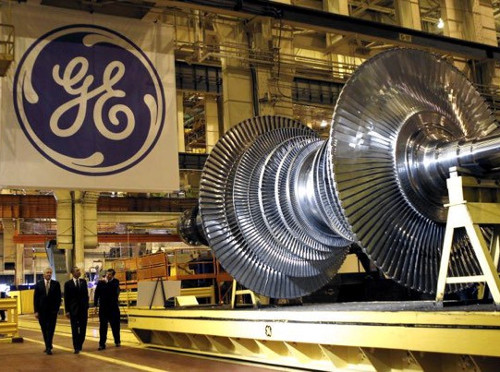 GE’s reorganization into a financial group was reinforced by these broader economic and political changes. Rather than specializing in producing specific products and technologies, the firm was increasingly oriented toward buying and selling businesses, restructuring and selling off those that it deemed a drag on long-term performance. While internal corporate research and development (R&D) remained important, this was increasingly devoted to “downstream” commodification of state-developed technologies.
GE’s reorganization into a financial group was reinforced by these broader economic and political changes. Rather than specializing in producing specific products and technologies, the firm was increasingly oriented toward buying and selling businesses, restructuring and selling off those that it deemed a drag on long-term performance. While internal corporate research and development (R&D) remained important, this was increasingly devoted to “downstream” commodification of state-developed technologies.
When Jack Welch took the reins in 1981, he decentralized the R&D operation so funding would come from specific businesses rather than central corporate planners. In just seven years, the company cut its central R&D staff by 30 per cent, reflecting a shift to more “product-relevant” research activities: “We are not interested in incubating new businesses,” Welch explained.
Though Welch sold GE’s defense business (which later merged with Lockheed) to Martin Marietta in 1992, the company remained central to the increasingly marketized state-led innovation system. This was clear from the large volume of military contracts serviced by GE’s aerospace division, as well as Immelt’s investments in the “Industrial Internet of Things” and 3-D printing.
But GE’s restructuring didn’t mean that the company had given up its seat at the center of the military-industrial complex. Rather, it illustrated the changing mechanics of how this innovation system worked. What was emerging, alongside the financialization of the firm and the rising prominence of the financial sector in the economy more broadly, was a new fusion of finance, industry, and state power.
GE as a Financial Group
John Flannery’s career trajectory also points toward GE’s financialized reorganization, in which corporate managers are charged with directing an abstract pool of investment funds rather than with overseeing concrete processes and operations.
Though no major conflict between financial and industrial capital occurred, the neoliberal resolution to the 1970s crisis dramatically empowered finance. Aided by regulatory changes between the 1970s and 1990s, culminating with the repeal of Glass-Steagall, a second wave of concentration and centralization of capital took place – this time in the hands of financiers, who consolidated large blocks of corporate stock. Their ownership stakes allowed them to discipline the professional managers who had long occupied the apex of capitalist class power.
Just as it took place in the economy more broadly, financialization also occurred within the firm, as direct administrative oversight gave way to flexible financial discipline. By the time Reginald Jones took over in the 1970s, corporate planning resembled an internal capital market, with divisions competing for a finite amount of investment funds distributed by top executives. These top executives no longer saw individual businesses as concrete operations to be managed, but rather as independent investments in a portfolio. They encouraged divisional managers to act like owners and autonomously develop business plans to present to high-level managers as if they were external investors.
While CEO of GE, Jones also served as the head of the Business Roundtable, the Business Council, and the President’s Export Council – President Carter’s top advisory body on trade policy. Put simply, Jones became one of the most politically prominent businessmen in American history at a crucial moment. That he played no small part in organizing support for neoliberalism at its inception powerfully illustrates the degree to which the distinction between the interests of financial and nonfinancial capitalists had blurred, especially as the reorganization of the corporation as a financial group once again fused finance and industry.
Further, those heading nonfinancial companies looked to expand and integrate the international financial architecture necessary to facilitate capital mobility and internationalize production. This change would open up a vast new reserve army of labour in peripheral states to exploitation, reducing labour costs and helping to resolve the 1970s profitability crisis.
These processes took on new prominence during Jack Welch’s tenure. While leading the firm into financial-services markets, Welch called for a new focus on “shareholder value.” According to this doctrine, the firm’s sole purpose is to produce value for investors – which itself reflects the shifting power relations within corporate governance under neoliberalism. For these reasons, along with the brutal downsizing and offshoring that represented his contribution to the broader neoliberal onslaught, most people associate Welch with his company’s financialization.
But despite GE’s foray into financial services during the Welch years, it would be wrong to see financialization as simply turning the company into a bank, or “hollowing out” industry. Rather, this entailed reorganizing corporate governance to expand the operation of competitive markets within the firm, making its financial operations more prominent in its overall organization and restructuring its productive assets.
This is clear from Immelt’s years as CEO, when he largely broke up and sold off the company’s financial services business at the behest of the state’s Financial Services Oversight Committee while investing in so-called Industrial Revolution 2.0 technologies developed within the military-industrial complex.
That new CEO Flannery spent thirty years in GE’s finance division reveals that although the firm may have gotten out of financial services, its more fundamental financialized restructuring has proceeded apace.
Flannery played an important role in the company’s Mergers and Acquisitions strategy, which involved continuous restructuring. Rather than incubating new businesses, GE showed consistent growth by using its triple-A bond rating to enact a series of leveraged buyouts (LBOs), in which it would buy a company on credit, restructure it, and then sell off the pieces. Flannery assessed and executed these LBOs.
Subsequently, he served as head of the internal corporate restructuring unit before moving to the private equity division. Often derisively referred to as “vulture capitalism,” private equity involves buying up undervalued assets, then chopping them up or restructuring them in order to sell them off for a profit. Flannery took this orientation to his time as head of GE’s Healthcare division. He undertook a major restructuring to increase revenue and cut costs – though some investors still hope the company will sell off the division.
All this suggests that Flannery will assess the firm’s internal assets no differently than if they were independent external businesses, indicating the extent of the firm’s evolution into a financial group.
The Return of Investor Power
Immelt’s resignation shows that investors now wield immense power over corporate governance. His massive restructuring away from financial services and toward core engineering businesses yielded high dividends, but it did not raise the share price. Activist investors began pressuring management to increase shareholder value.
Nelson Peltz, who runs Trian Fund Management, is especially notable in this regard. In fact, some in the financial press – among them Jim Cramer – have attributed Immelt’s retirement almost single-handedly to Peltz.
In 2015, Trian released a white paper laying out a set of targets for GE. While praising the financial services sell-off, it also insisted that the company increase its share-buyback program and engage in joint ventures or break off businesses through IPOs. This pressure likely intensified after May 15, when shares hit a fifty-two-week low and Deutsche Bank suggested it would have to cut dividends. Further, institutional investors who have visited GE headquarters in recent months have reportedly been meeting with Flannery.
We will have to wait and see if Trian gets a directorship. If it does, it would reinforce the hypothesis that we are dealing with a new stage of finance capitalism, marked by the extreme concentration of wealth and power in the hands of a relatively small group of investors. Trian, for example, has already won seats on the boards of Sysco Corp and the Bank of New York Mellon Corp.
This concentration has rapidly increased since the 2008 crisis, especially among the big three passive investment funds: BlackRock, Vanguard, and State Street. Whereas active funds employ managers who can pick stocks that will outperform the market, these funds make trades that reflect the strength of firms within a market index: the stronger the firm, the more shares they acquire. As one recent study put it, the shift toward passively managed funds between 2008 and 2015 represents a “historically unprecedented swing in investment behavior.”
Since the financial crisis, both activist hedge funds and large private equity firms have taken on more significant power in corporate governance. Far from being antagonistic to one another, the two strategies serve the same ends: increasing shareholder value at all levels. This pressure comes from activist investors like Trian, which seek out higher returns; from passively managed equity firms, which demand restructuring; and from the financial components within ostensibly nonfinancial companies, which push for increased returns from the productive assets they control.
Putting these changes in the context of a new era of financialization also suggests that the claim that share buybacks amount to looting companies in order to reward existing investors misses the mark. In fact, these were mechanisms facilitating the deeper consolidation of financial power.
If Trian does not get a GE directorship, it may push for unrealistic targets in hopes of encouraging the company’s breakup. Many expect the firm to release a new white paper once GE misses the targets it previously laid out. Most, however, concede that Trian would struggle to achieve this: GE has massive market capitalization, and Trian owns just 0.9 per cent.
Either way, it’s clear that investor pressure played a role in the corporate shake-up. Aside from Immelt’s reportedly teary surrender, Flannery almost immediately scheduled a conference call with investors during which he said, “No one’s happy with the stock price right now. … We know we can do better.”
With Immelt’s restructuring largely complete – which Flannery played no small role in executing and has reportedly praised – investors and managers may hope that the new CEO will know how to reap the benefits. After all, he thoroughly restructured the healthcare business and increased post-crisis sales in India by 50 per cent; all this after having overseen strong growth in GE Capital’s operations in Asia. Investors did react positively to his appointment, as stock rose 4 per cent after the announcement.
Corporate Restructuring, Class Power, and the Left
The choice of John Flannery to succeed Immelt indicates the complete unraveling of the institutional foundations of New Deal corporate liberalism. That system relied on a group of corporate managers closely tied to the state charged with overseeing large-scale and relatively globalized operations. This managerial elite often worried more about labour peace than labour costs. In contrast, Flannery has said that he supports Trump’s agenda even as he promised he will “try to steer clear of politics.”
Today’s corporate managers have become less and less the administrators of centralized, hierarchical bureaucracies and more and more the possessors of abstract capital to be invested in many different businesses and operations.
“Amid free global capital mobility, executives can rely on competition between workers and the states governing them to keep costs down.”
Increasingly, the qualitative problem of labour discipline appears as a quantitative issue of labour costs. Amid free global capital mobility, executives can rely on competition between workers and the states governing them to keep costs down. Especially in the case of highly diversified conglomerates like GE, high labour costs in one sector or region do not call for political intervention, but rather for investment elsewhere. Market competition cuts wages seemingly automatically.
Capitalists now care more about preserving capital mobility and market stability than securing labour discipline through political compromises. Meanwhile, state power has increasingly been concentrated in those agencies responsible for organizing capital’s internationalization, especially the Treasury and Federal Reserve. Further, these institutions have been carefully insulated from democratic institutions under the banner of “good governance” and “regulatory independence.” They are tasked with safeguarding the financial system’s stability and protecting the power of big finance as the nerve center of global capitalism.
Social policy is now codified through international trade agreements, free from unnecessary public debate and scrutiny. Meanwhile, the apparatuses that once supported the working class have either atrophied or become mechanisms that intensify market discipline.
The Trump phenomenon suggests that this kind of authoritarianism can spin out of control. Indeed, some capitalists seem deeply concerned about aspects of Trump’s program. But while they may condemn specific policies, such as the Muslim ban, they have yet to publicly disapprove of his broader challenges to liberal democratic norms. Indeed, they may even welcome it, perhaps because of the unraveling of the state formation that supported New Deal liberalism.
GE still largely symbolizes what American capitalism is rather than what some hope it might become. The company’s history proves that we cannot separate industry from finance, while highlighting that we cannot solve the problems of workers and communities through incremental reforms or unionization alone. The restructuring of state and corporate power amidst globalization means that simply returning to the “Keynesianism” of pre-1970s American capitalism isn’t a serious possibility.
The Left must instead confront capital with a program that goes well beyond restoring the capitalist “golden age.” Rather than breaking up the banks to increase their competitiveness, we must advocate nationalizing finance to expand democratic control over investment. Rather than changing the world without taking power, we must develop a plan to enter and transform the state, directing it to engage in democratic economic planning.
That these goals are ambitious does not make them any less necessary. Given the mounting ecological and social crises we face, it’s obvious that the real utopians are not those who dare to dream of another world but those who still believe things can continue as they are. •
This article first published by Jacobin.


